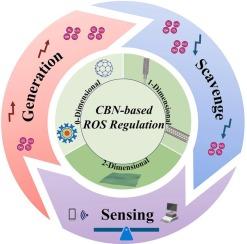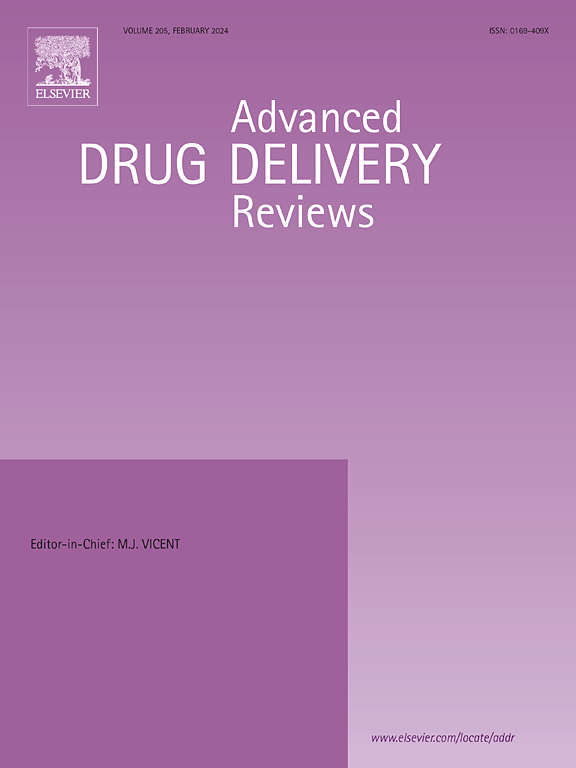Harnessing carbon nanomaterials for reactive oxygen species regulation: Insights into generation, scavenging, and sensing
IF 17.6
1区 医学
Q1 PHARMACOLOGY & PHARMACY
引用次数: 0
Abstract
Carbon nanomaterials (CBNs) have driven significant research advances in medicine over the past decades due to their unique structures and properties. In particular, the role of CBNs in regulating reactive oxygen species (ROS) has been extensively studied recently. ROS, primarily comprising free radicals and non-radical species of oxygen, are recognized as critical byproducts of cell metabolism. ROS level is vital for local cell and tissue homeostasis, facilitating cell–cell communication, and stabilizing the redox system under normal conditions. However, excessive accumulation of ROS can cause oxidative stress, leading to aging and serious pathologies. As a result, the regulation of ROS in various diseases has garnered significant attention. In this regard, understanding the interaction of CBNs with ROS is critical for their biomedical applications. This review article highlights the dual role of ROS in the tissue microenvironment and emphasizes the significance of the structure–property relationship of CBNs in regulating ROS. It further identifies emerging trends in recent studies on CBN-based ROS regulation including generation, scavenging, and sensing. Specifically, the potential for dynamic modulation of the tissue microenvironment through the combined generation and scavenging of ROS is highlighted. Finally, future perspectives are presented, focusing on the biosafety and potential clinical applications of CBNs, as well as recent advances in sensing technologies and insights into redox biology. Together, these insights aim to provide a foundation for designing CBN-based biomaterials for both ROS therapeutic and monitoring applications.


利用碳纳米材料的活性氧调节:洞察产生,清除,和传感
碳纳米材料由于其独特的结构和性能,在过去几十年中推动了医学领域的重大研究进展。特别是CBNs在调节活性氧(ROS)中的作用近年来得到了广泛的研究。ROS主要由自由基和非自由基氧组成,被认为是细胞代谢的重要副产物。在正常情况下,ROS水平对局部细胞和组织稳态、促进细胞间通讯和稳定氧化还原系统至关重要。然而,ROS的过度积累会引起氧化应激,导致衰老和严重的病理。因此,活性氧在各种疾病中的调控受到了极大的关注。在这方面,了解CBNs与ROS的相互作用对其生物医学应用至关重要。本文综述了ROS在组织微环境中的双重作用,并强调了CBNs的结构-性质关系在调控ROS中的意义。它进一步确定了最近基于cbn的ROS调控研究的新趋势,包括产生、清除和感知。具体来说,通过ROS的产生和清除来动态调节组织微环境的潜力被强调。最后,讨论了未来的前景,重点讨论了CBNs的生物安全性和潜在的临床应用,以及传感技术的最新进展和对氧化还原生物学的更深入理解。总之,这些见解旨在为设计用于ROS治疗和监测应用的基于cbn的生物材料提供基础。
本文章由计算机程序翻译,如有差异,请以英文原文为准。
求助全文
约1分钟内获得全文
求助全文
来源期刊
CiteScore
28.10
自引率
5.00%
发文量
294
审稿时长
15.1 weeks
期刊介绍:
The aim of the Journal is to provide a forum for the critical analysis of advanced drug and gene delivery systems and their applications in human and veterinary medicine. The Journal has a broad scope, covering the key issues for effective drug and gene delivery, from administration to site-specific delivery.
In general, the Journal publishes review articles in a Theme Issue format. Each Theme Issue provides a comprehensive and critical examination of current and emerging research on the design and development of advanced drug and gene delivery systems and their application to experimental and clinical therapeutics. The goal is to illustrate the pivotal role of a multidisciplinary approach to modern drug delivery, encompassing the application of sound biological and physicochemical principles to the engineering of drug delivery systems to meet the therapeutic need at hand. Importantly the Editorial Team of ADDR asks that the authors effectively window the extensive volume of literature, pick the important contributions and explain their importance, produce a forward looking identification of the challenges facing the field and produce a Conclusions section with expert recommendations to address the issues.

 求助内容:
求助内容: 应助结果提醒方式:
应助结果提醒方式:


